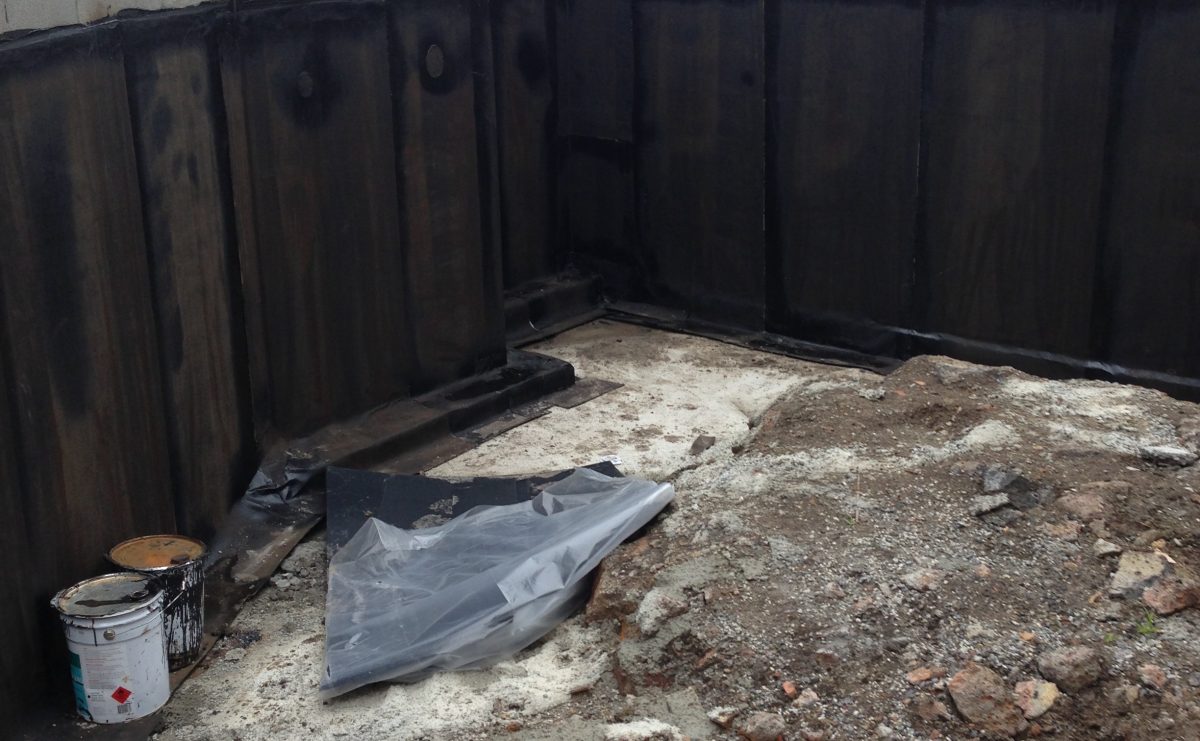Basement & retaining wall waterproofing, commonly called below ground tanking, can present unique challenges requiring very careful selection of not only the waterproofing system used, but the entire drainage system as well. Tanking of basements & retaining walls should only ever be considered a last line of defence when all other systems have failed.

The choice of material used is often determined by the space available behind the wall. The more space available, the more materials are available to choose from. Drainage & protection requirements are also determined by the soil & fill types.
In cases of basement tanking where there is a high-water table, it is always advisable to tank below the slab as well as the walls. This can be achieved by pouring of foundations prior to tanking, the installation of the tanking membrane then following up with the pouring of a blinding slab.
Irrelevant of which kind of waterproofing/tanking is being installed to the basement or retaining wall, the surface needs to properly prepared. Core filled blockwork needs to be properly dried. Wall surfaces need to be lightly scraped to remove excess materials and footings need to be exposed and clean. And pipework that will penetrate the membrane needs to be installed and any gaps need to be filled.
Butyl Rubber Tanking
Butyl rubber can be used in two ways for below ground tanking. Most commonly it used to create a vulcanised bag for a basement or cellar to be built inside. This creates a fully sealed basement, but great care must be taken to ensure no damage is done to the membrane during construction.
Butyl rubber is also often used where there is little space between the wall and the excavation. With difficulty, butyl rubber can be fed down narrow gaps to give a protective skirt.
Seamless Liquid Tanking
When there is enough space for a person to operate behind the wall, we can look at applying liquid membrane systems. Many systems exist in todays market and the circumstances will dictate which system is best to use.
Liquid membranes require multiple coats to achieve a watertight seal, and each coat must be allowed to properly cure prior to the application of the next. This time delay also applies to the application of protective and drainage layers.
Torch-on & Self-Adhesive Bitumen
Torch-on bitumen is our “go to” membrane for waterproofing basements & retaining walls, provided there is a minimum 800mm gap between the wall and the excavation to allow for safe use of high temperature gas torches.
Torch-on bitumen membranes are fast to install, tough, and can be used for walls only or for full encasement by installing the base prior to the slab and the walls at a later date.
In cases where there is not enough room to apply a torch-on membrane, but a sheet membrane is required over a liquid membrane, The Waterproofers can always use a self-adhesive bitumen system.